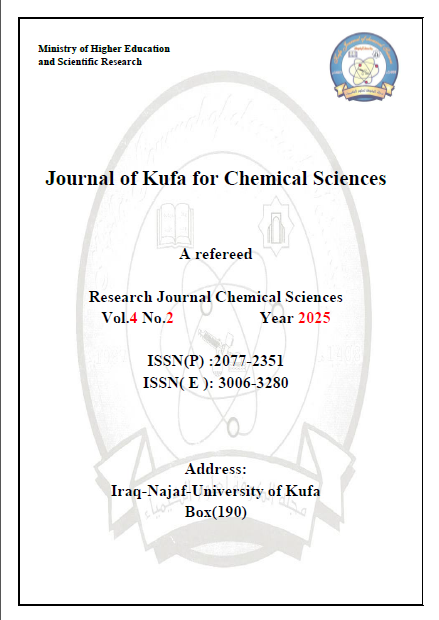Abstract
A set newly complexes with the general formula [M(L)Cl2] are resulting from the reaction of a new schiff base ligand [Ethyl (6R,7R)-7-((E)-2-((2-ethoxy-2-oxoethoxy)imino)-2-(2-(((E)-4-nitrobenzylidene) amino) thiazol -4- yl) acetamido) -8- oxo -3- vinyl -5- thia -1-aza bicyclo [4. 2.0] oct -2- ene -2- carboxylate] (L). This ligand was derived from the reaction of the two substances 4-nitrobenzaldehyde and precursor (P). Reaction the ligand with metal ions M= Mn(II), Co(II), Ni(II), Cu(II) and Cd(II) afforded new complexes which are characterized by FT-IR and Electronic Spectra. These measurements indicate that the complexes have a tetrahedral geometry. The Penicillin-Binding Protein 3 (PBP3) of Staphylococcus aureus and the target protein was â-Lactamase belong to the family CTX-M of Escherichia coli were chosen to study the binding strength of the ligand and the copper complex prepared by molecular docking method as a primary measure of the biological activity of these compounds. The inhibition ability of the prepared compounds was tested against four types of selected bacteria (G-) Coli Escherichia and Klebsiella pneumoniae & (G+) Staphylococcus aureus and Staphylococcus epidermidis and fungi Candida albicans, where the results showed that the ability of the complexes to inhibit selected types of bacteria was different to the schiff base ligand.
Keywords
4-nitrobenzaldehyde
heterocyclic unit
Schiff base
theoretical study
